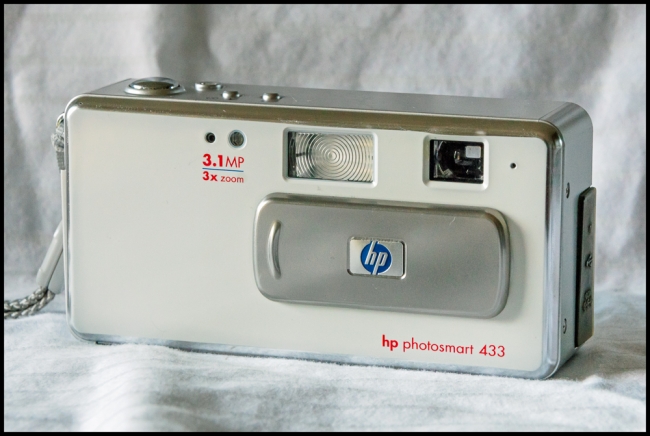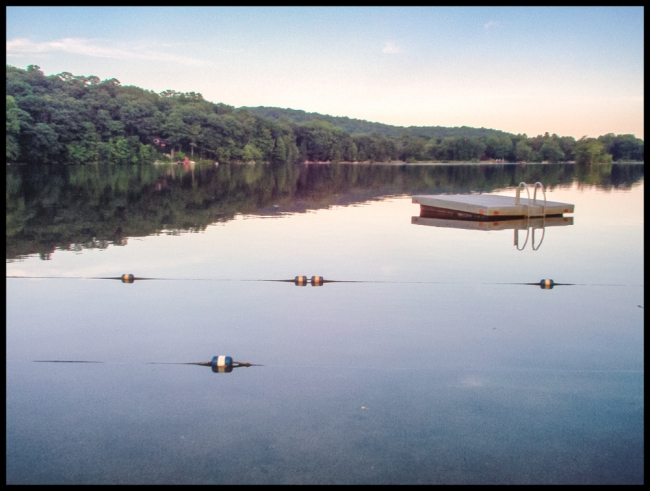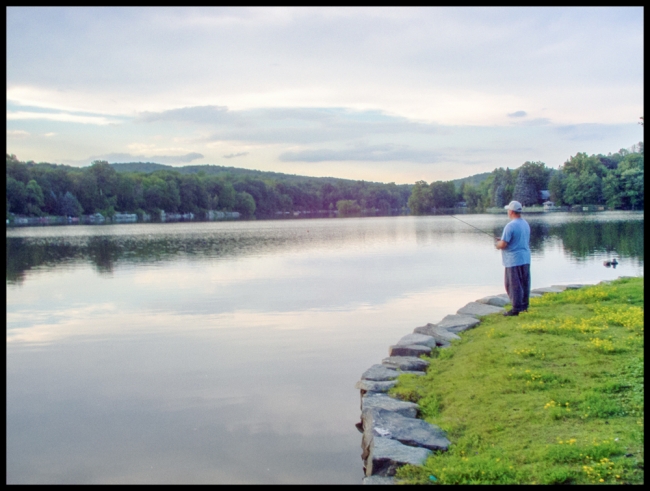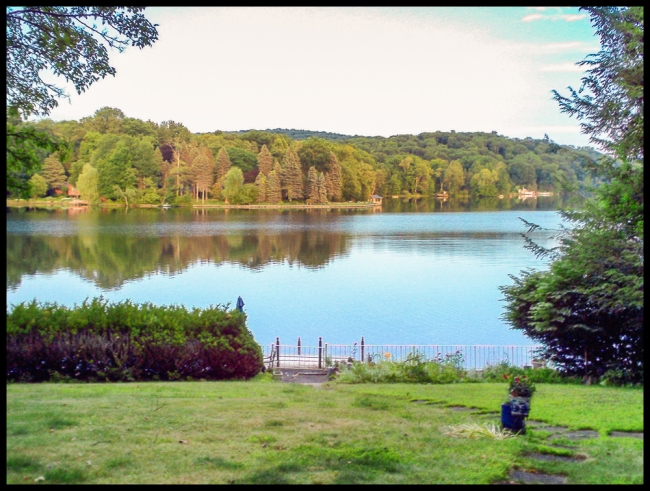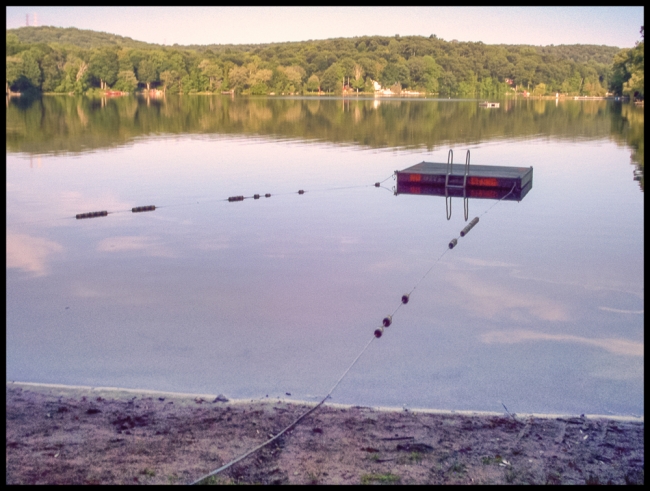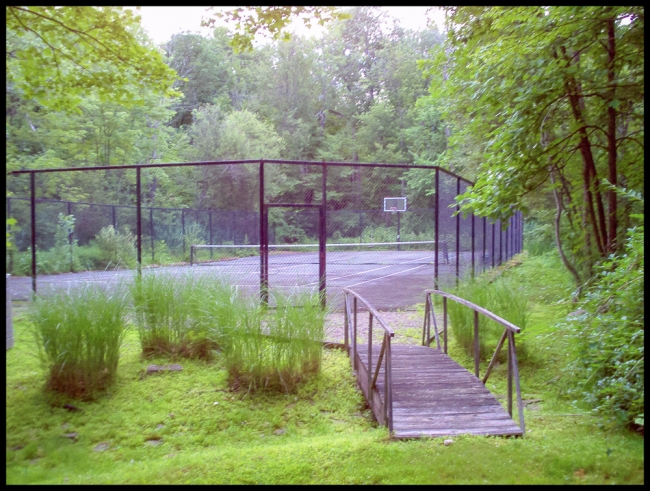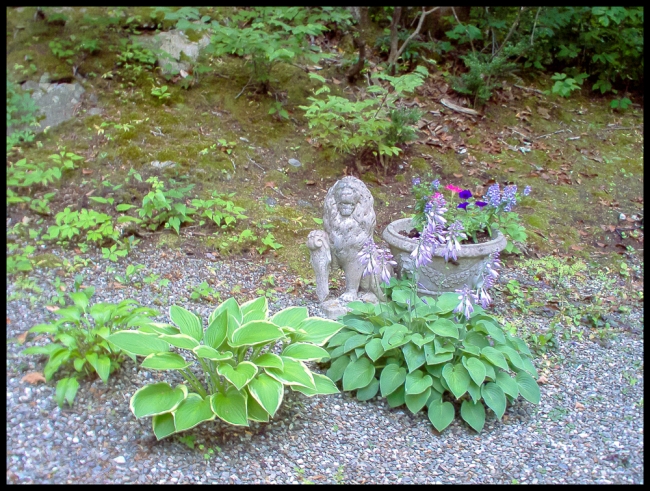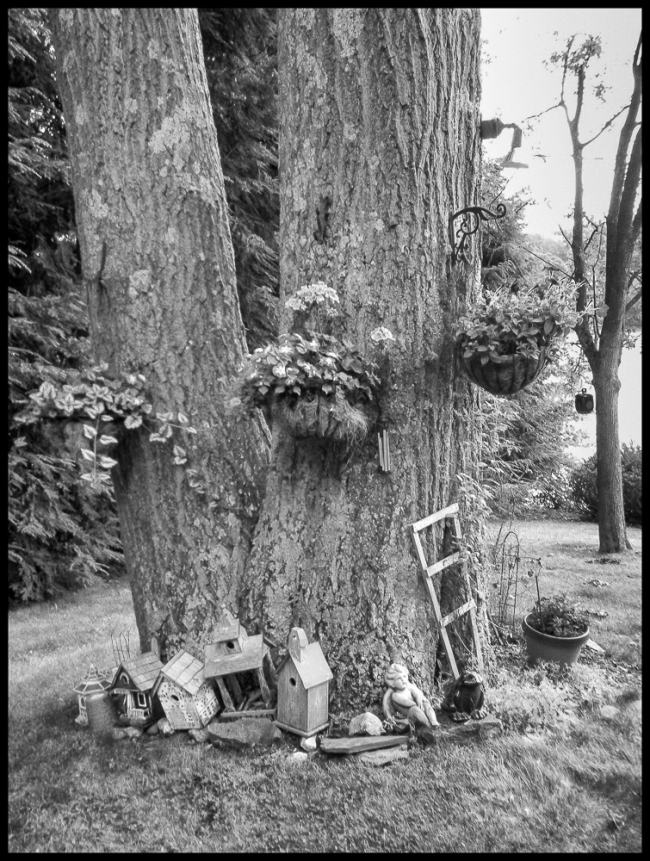I generally use either fairly recent generation digital cameras (e.g. Sony A77II; Sony RX-100; Sony NEX 5N) or any of a quite large number of old/vintage film cameras. In this case the camera is also fairly old (I don’t know exactly how old, but the date on the accompanying manual is 2003), but rather than being a film camera it’s digital.
It’s a HP photosmart 433 and it was given to me by a friend. It’s quite small (4.6in x 2.2 in x 1.5in deep) and light (0.44lbs) and has a 3.1 megapixel, 1/27 inch CCD sensor and uses standard AA batteries.
Floating dock at Spur Beach.
It also has a tolerably large and bright optical viewfinder and a tiny (1.5 inch diagonal, 61,600 pixel screen). The lens is fixed focus with an f4.0 aperture. Shutter speeds range from 1/1.5-1/1000 seconds. The camera also has a built in flash with a range of 8ft.
Quality settings are: Super-fine JPEG 2048 x 1536; Fine JPEG 2048 x 1536; Normal JPEG 640 x 480. It also has video capture (.avi) at 320 x 240 – 15 fps. ISO ranges from 100-400.
Fisherman at Spur Beach.
Exposure compensation in the ±2 EV range, in 1/2 EV steps is available view a menu option.
Exposure is fully automatic and action and night (via the flash settings) modes are also available. There’s also a black and white mode and a self timer.
The camera does not offer an optical zoom. Instead a digital zoom (up to 3.0x) is provided.
Lake view from our house.
Images are stored in memory (16mb) and on an SD card.
Digital Print Order Format (DPOF) support is also provided.
Floating dock at Moon Beach.
Why did I even try this antediluvian digital camera? Well, I like a challenge and I truly believe that it’s not the camera that makes a picture – it’s the photographer. I believe a reasonably competent photographer should be able to get a decent picture from any camera. How did I do? Probably I’m not as competent as I sometimes think I am and I wasn’t too pleased with the results. I didn’t really give myself a fair chance though. I took the camera with me while walking the dog and just took a few snapshots while walking around my neighborhood. I didn’t read the manual and I didn’t even go through the various, but few menu options available.
Tennis court.
The LCD is so small and has such a low resolution that it’s virtually useless. I hate digital zooms and so didn’t use it. The optical finder wasn’t bad, but I had to be careful to keep my finger away from the lens. The camera seems to have a very poor dynamic range: anything the least bit “contrasty” and the highlights were badly blown. Perhaps the exposure compensation could have helped here had I only known that it existed. I was also a bit frustrated that the camera resets a number (but not all) of the settings when you turn it off. I was particularly annoyed that the flash reset to auto when I always want it to be set to off (shades of the Olympus Infinity Stylus Epic). I only discovered later that by holding down the ‘OK’ button while turning on the camera will retain the settings from the previous session.
Guardian Lion.
By fully familiarizing myself with the camera; picking my subjects better; choosing to shoot in better light etc. I could perhaps get better results – but why bother. This particular camera is never likely to become my ‘go to’ camera. I might give it one more go before I put it out to pasture though.
Around our tree. An example of the camera’s black and white mode.
One final anecdote to end this post. When my friend gave me the camera he initially wanted to keep the 32 gigabyte card that came with it. Unfortunately, I had to point out the it wasn’t a 32GB card but rather a 32 MEGABYTE card.

